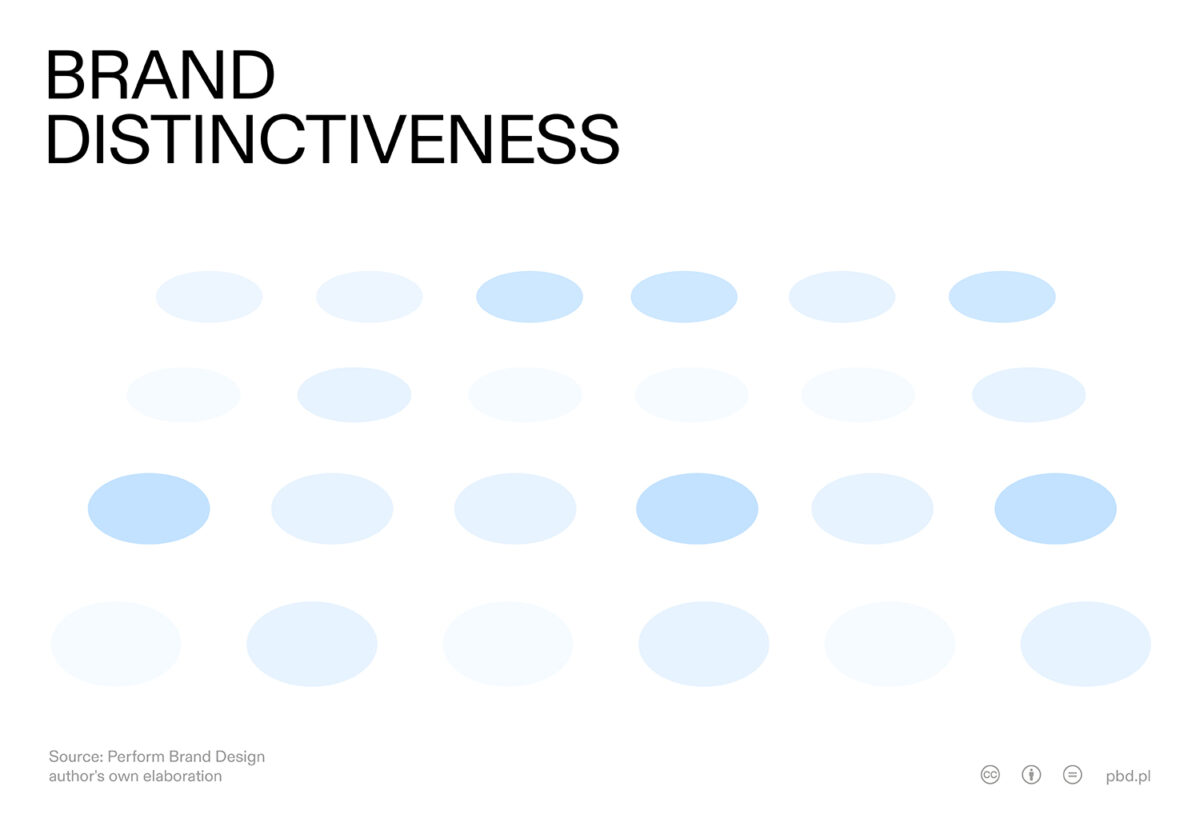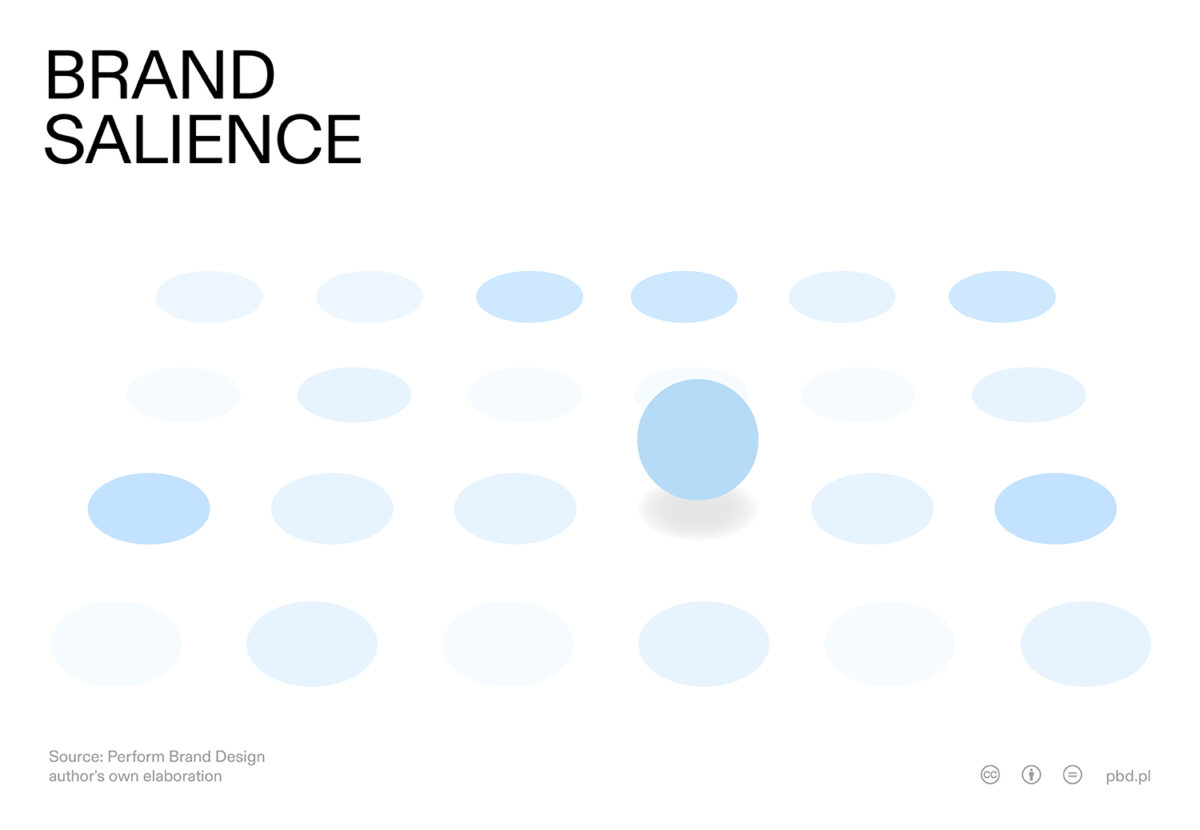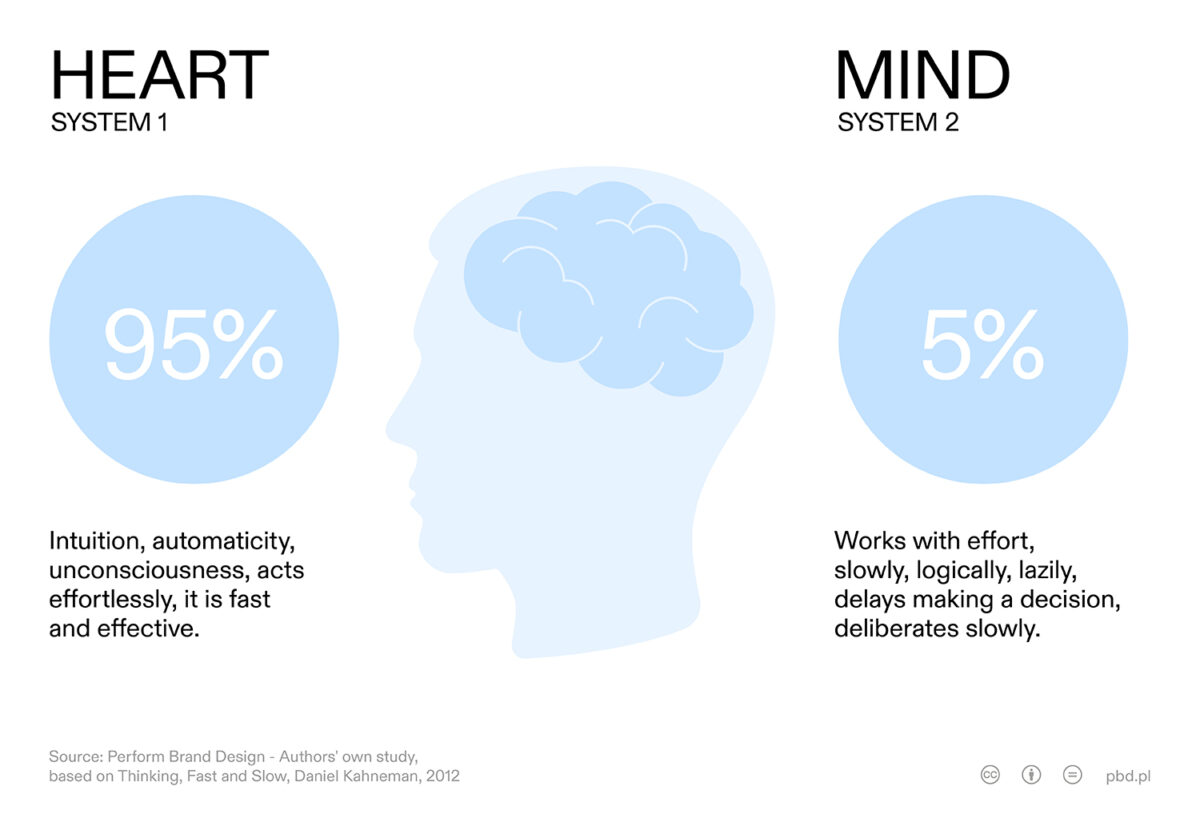Build brand salience or die!
What better thing could happen to a brand than to stand out strongly against the competition? When everyone is warm and patient and we suddenly become loud and charismatic – making customers finally notice and appreciate us – does this increase our strength? What actually makes a consumer choose this brand and not another? Colour, associations, an innovative ingredient or perhaps a distinctive narrative? Is it really about being different, at least in one area important to our customers?
Differentiate or Die
Paraphrasing Jack Trout’s most famous quote and the title of one of his books, Differentiate or Die, I would like to point out that, unfortunately, what may once have been important (i.e. brand differentiation) may not be enough in today’s reality. Today, we know full well that only branding processes lead to sustained financial growth for a company, and representatives of the fact-based marketing trend consistently call for a focus on brand (distinctiveness, individuality and strong personality), rather than constantly emphasising what makes us different from others. Unfortunately, in a hyper-competitive market, distinction is definitely not enough to be the best. Nor is it about the passion and desire to win, nor is it about permanently investing in sales activations along with the constant expansion of the sales department.
What, then, makes the market leader often ten times larger than the next few brands in the ranking? Logic suggests that this is not due to brand differentiation, because, when analysed coldly – every brand stands out in some way. One cereal contains more almonds, another is saturated with sultanas. Pepsi has more sugar than Coca-Cola (or vice versa), a manufacturer’s jelly beans are based on fruit juices, and still others are vegan. However, customers of a brand usually no longer perceive it as ‘different’ and do not cite the differentiators as key in their purchase decision. In addition, when we analyse the topic in more depth, we find that usually customers of competing brands do not perceive them as very different from each other.
Mental availability
Products from strong brands – which no one is urging anyone to buy by knocking from door to door – have one thing in common. It is the ease with which the brand name (packaging or physical features of the product) is recalled in the customer’s mind at the time of the purchase decision. And it is not a matter of being at the top of mind and automatically mentioning the name of the brand as the representative of a category, but of the consumer being able to relate to that brand in any way; so that there is a kind of relationship between the customer and the brand.
Many studies show that in such a situation there are only a few mentally accessible brands (i.e. brands that the customer allows to be purchased of its own accord, without external activation), sometimes only two or three. Competition is therefore enormous. And everything points to the fact that it will soon become crucial to build relationships with as many people as possible, in an open market. How? Through penetration, publicity, fame and a clear identity. Soon, moreover, we won’t be talking about strong and weak brands, but brands big and small. And trends such as co-creation, constant brand dialogue in social media, omni-channel and consistency in the media mix are, after all, nothing more than relationship-building tools and a manifestation of what the functions of the brand will be in the perspective of tomorrow.

When life and business are racing by at blinding speed, we have no time to compare. It is an indisputable fact that we see what stands out, because our perception has been evolutionarily programmed so that we notice precisely what stands out from the rest. However, in today’s frantically fast-paced everyday life, offers flood us at every turn. So we decide to buy only what we feel a certain kind of chemistry with. This chemistry is nothing but mental availablity and brand value in our eyes. The chances of success increase when a brand sticks out above others. To put it another way – brand salience is the best way to make a customer want to buy a company’s products.

Brand salience – the key to success?
Brand salience is meaningfully broader than any single measure of brand performance. What does it mean in practice? Let’s compare brand A and brand B. If A has greater brand salience than B, it means that it probably has more customers who:
- are “aware” of it (to measure awareness, familiarity, recognition)
- they place it among frequently purchased products (in their “active brand repertoire”)
- they are considering buying a branded product (sailence brands are on the list of things “I intend to buy and will use in the future”)
- they know the brand and have a certain opinion about it
- they feel that the brand is mentally and physically accessible (they have a sense that they can buy it easily. They are confident in terms of retail availability or after-sales service)
- Have strongly positive perceptions about the brand
- perceive it as good value for money (“the brand is good value for money”)
- would buy it if their usual brand was not available
- are ‘loyal’ to the brand (in all respects).
- they choose it in product tests
- they notice and are able to recall advertisements for sailence brands (on a general level, but still)
- they talk about it more often and more intensively in focus groups
System 1 versus system 2
Making decisions, including purchasing decisions, is an energy-intensive task for the brain, and the solution to this problem is habits – i.e. automatic decisions and reactions to situations we have dealt with before. So, the more often we repeat an action (have contact with something or think about something), the more easily our brain structure adapts to the situation in order to trigger more efficient behaviour in us.
So when we hear the phrase ‘two times two’, we mechanically respond with ‘four’. There is nothing to think about; this is where our 1 (automatic) system works. However, when we hear “twelve times seventeen”, system 2 (reflexive) is triggered. I have to think first about whether I will count the action in my mind, write it down on a piece of paper or perhaps reach for the calculator on my phone.
A brand is salience when thinking about it gets from the slow system to the fast system. Let’s note that system 1 (automatic) is responsible for 95% of our decisions. Perhaps as marketers we should learn to communicate with it? And what language does the subconscious use? First of all, it asks us for one thing – “Don’t make me think”! And unfortunately, whoever claims that imagery does not matter disregards the salience of the brand and thus misses a unique opportunity to trample a path to the customer’s heart. It is symbol and emotion that constitute the basic language of the fast and subconscious system.

A brand is salience when thinking about it gets from the slow system to the fast system. Let’s note that system 1 (automatic) is responsible for 95% of our decisions. Perhaps as marketers we should learn to communicate with it? And what language does the subconscious use? First of all, it asks us for one thing – “Don’t make me think”! And unfortunately, whoever claims that imagery does not matter disregards the salience of the brand and thus misses a unique opportunity to trample a path to the customer’s heart. It is symbol and emotion that constitute the basic language of the fast and subconscious system.
There is a common perception that the branding process is only achievable for brands that have been in the market for many, many years – that is, those with huge brand-building budgets. In reality, regardless of the size of your organisation/company and the reach of your brand, you can continually reinforce your salience work or start it even today. Every time you plan to promote your brand, ask yourself questions:
- Does this action lead to a situation where my brand will once again emphasise its distinctiveness?
- Am I inadvertently advertising a competitor or a full product category?
- Will the mental accessibility of my brand increase as a result of this action?
And that’s what this blog will be about – modern marketing communication that builds relationships. And also about strategic visual communication that translates into brand salience, understood as a situation where we automatically grab a brand from the shelf straight into our basket and rush to the checkout.